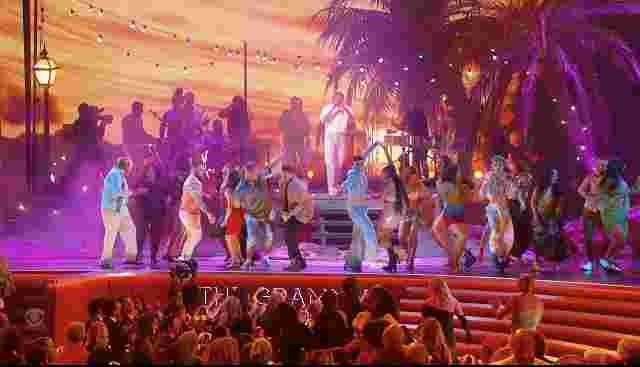Discover Puerto Rico’s Afro-Boricua History of Reggaetón, Salsa And Bomba
08 Feb 2023 by Sandra Bernardo in Caribbean, Celebrities, Cuisine, Escape, Event, Fame, General, Home, Hotels, Islands, Latin America, Money, Music, Pleasure, Restaurants, Spirits, Television, USA

After Bad Bunny kicking-off Sunday’s Grammy Awards with an energetic Latin infused musical number, followed by a Best Album in Música Urbana win, it’s time to highlight Puerto Rico’s impact on mainstream music—particularly the impact of Afro-Boricua culture in honor of Black History Month.
The roots of reggaetón, salsa and bomba can all be traced back to Puerto Rico and are highly impacted by the Island’s African heritage. Discover Puerto Rico’s latest campaign, ‘Live Boricua’ is a movement reflective of this rhythm and melody that is unique to Puerto Rico.
From Bad Bunny’s “Después de La Playa” to Ricky Martin’s “La Bomba,” Boricua music is now an undeniable part of American music culture. And Afro-Boricua artists like Calma Carmona and Princess Nokia are continuing push the envelope, reflecting the rich diversity of genres that have risen out of the Island.
If you’re planning a visit to Puerto Rico we bring you a quick course on all that is reggaetón, salsa and bomba and how you can experience them on the Island. And check out Discover Puerto Rico’s Spotify channel for more.
The Afro-Boricua History of Reggaetón, Salsa and Bomba
Reggaetón is an urban music genre that fuses hip hop with Latin American and Caribbean styles of music, which originated in Puerto Rico in the 1990s. Songs feature rapping and singing with a driving, pulsing beat.
Some of the most notable reggaetón artists include Daddy Yankee, Wisin y Yandel, Nicky Jam, Tego Calderón and many others. Reggaetón also influenced the development of Latin Trap music, led by Bad Bunny, which fuses mainstream trap with reggaetón beats and lyrics in Spanish.
Where to experience reggaetón on the Island:
Aguardiente is one of the most popular spots at La Placita, a historic market that transforms into a vibrant social scene in the evening. This is not the place travelers go to for a chill night; it’s where they go for a party and to dance until dawn.
Listen to reggaetón HERE
 Salsa is the style of dancing most people associate with Puerto Rico. The vibrant dance and music of salsa originated from the Boricua community in New York and it’s a fusion of styles found in the Caribbean. The music can be played fast or mellow, with bands and orchestras combined in a tight ensemble.
Salsa is the style of dancing most people associate with Puerto Rico. The vibrant dance and music of salsa originated from the Boricua community in New York and it’s a fusion of styles found in the Caribbean. The music can be played fast or mellow, with bands and orchestras combined in a tight ensemble.
Some of the best-known Boricua salsa performers and composers include Tite Curet Alonso, Ray Barretto, Héctor Lavoe, Cheo Feliciano, Gilberto Santa Rosa, Ismael Rivera, Bobby Cruz and many others.
Where to experience salsa on the Island:
Take a private salsa lesson and learn the rhythms of the Island with partners Get Shopped, which offers a “Rum, Mixology and Salsa Tour” or take a basic class at the popular Cambio en Clave.
Eco Sports Park also has a legendary salsa night, with dedicated salsa nights every Tuesday.
Travelers can practice their new dance moves by checking out this list of fun bars and clubs where dancers can put their new skills to the test during a night out.
Listen to salsa HERE
 Bomba is a traditional style of Puerto Rican music and dance that reflects the African heritage of the island. The musicians use three instruments: maracas, cuá (two wooden sticks), and the bomba barrel. The performance is an ongoing dialogue between musicians and dancers, playing and feeding off each other’s actions.
Bomba is a traditional style of Puerto Rican music and dance that reflects the African heritage of the island. The musicians use three instruments: maracas, cuá (two wooden sticks), and the bomba barrel. The performance is an ongoing dialogue between musicians and dancers, playing and feeding off each other’s actions.
Famous bomba artists include Rafael Cortijo, who took Bomba to the mainstream in the 1950/60s, composer Roberto Angleró, and Rubén Blades. Ricky Martin also mixes a bit of authentic bomba rhythm with other Latino influences in his aptly named song La Bomba.
Where to experience bomba on the Island:
Enjoy a night of live percussion, songs, and dance at places like La Terraza de Bonanza in Santurce, El Boricua in Río Piedras, La Vergüenza in Old San Juan and others that offer weekly performances.
Visit the town of Loiza to experience the birthplace of bomba
Schools like the Don Rafael Cepeda School of Bomba or El Batey De Los Hermanos Ayala are now teaching bomba drumming and dancing.
Listen to bomba HERE












